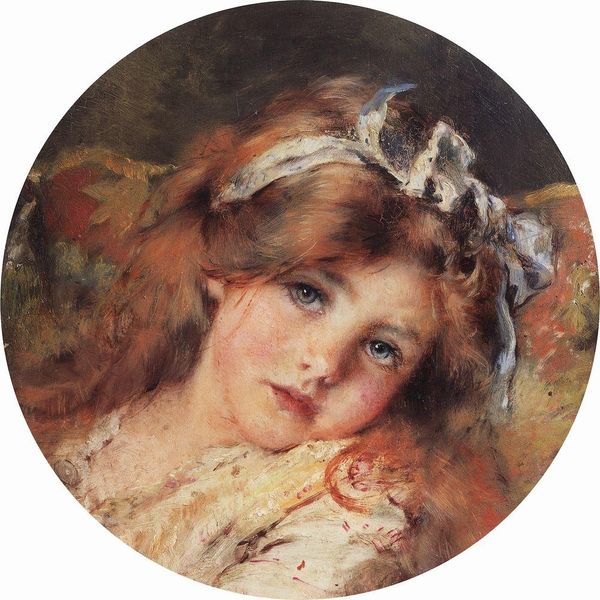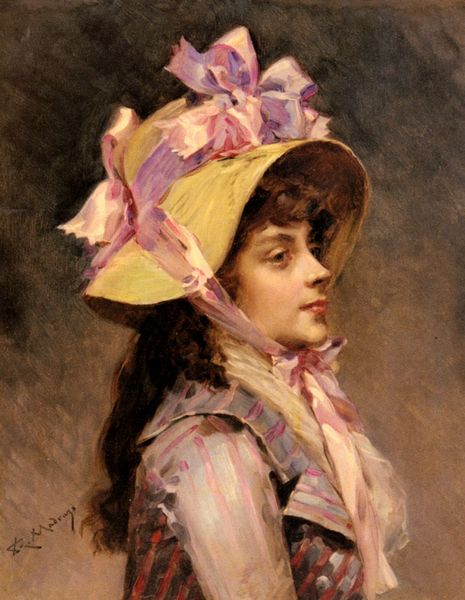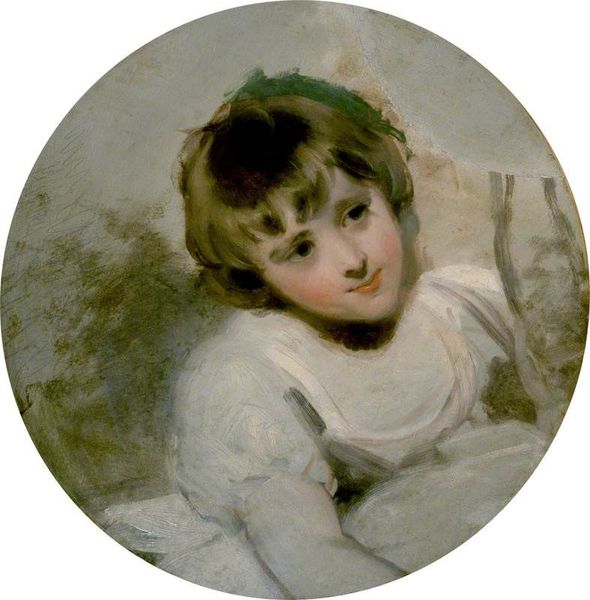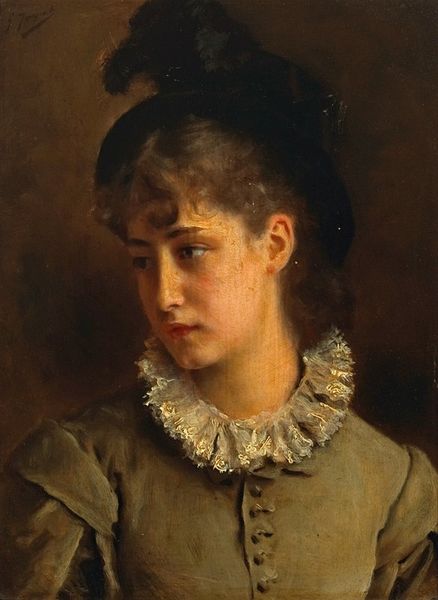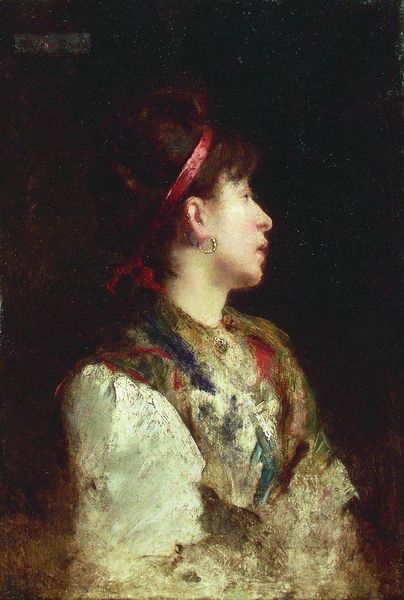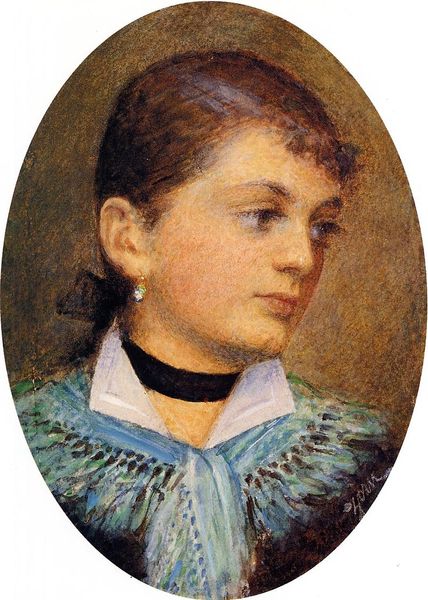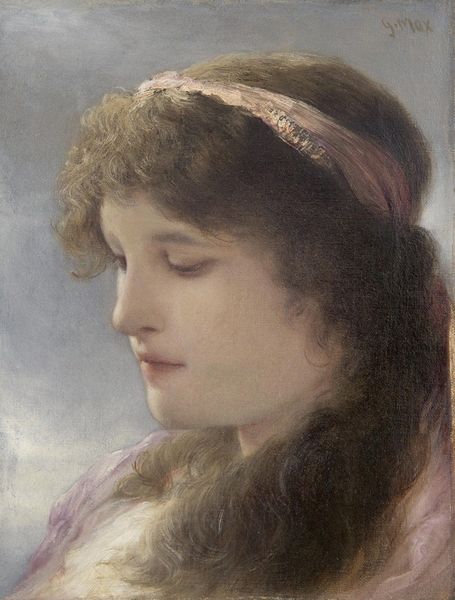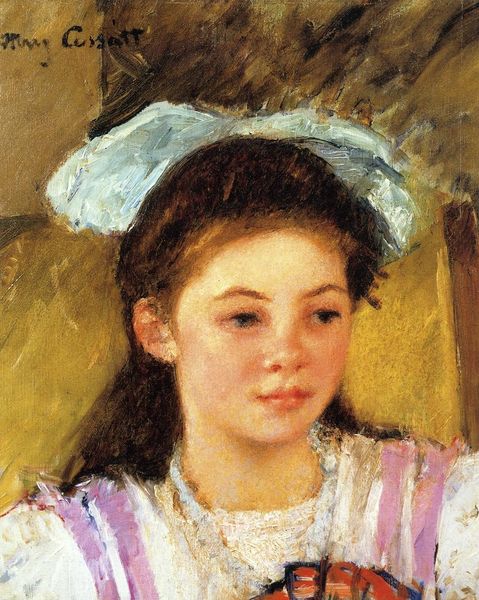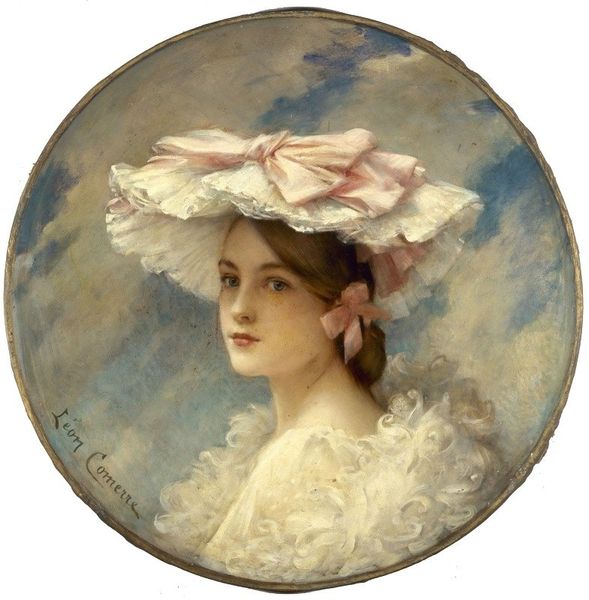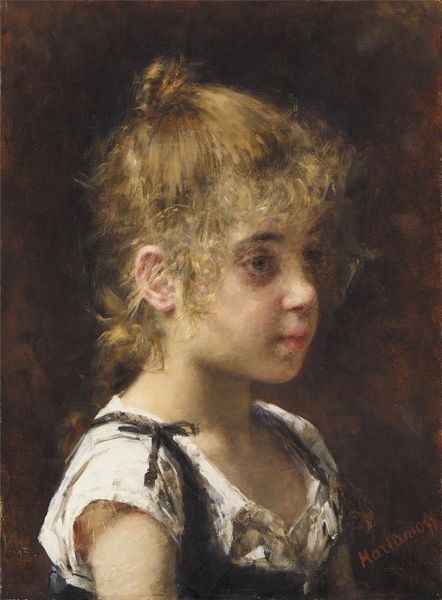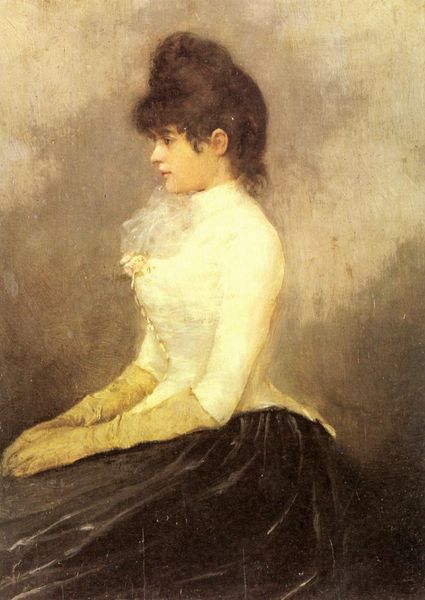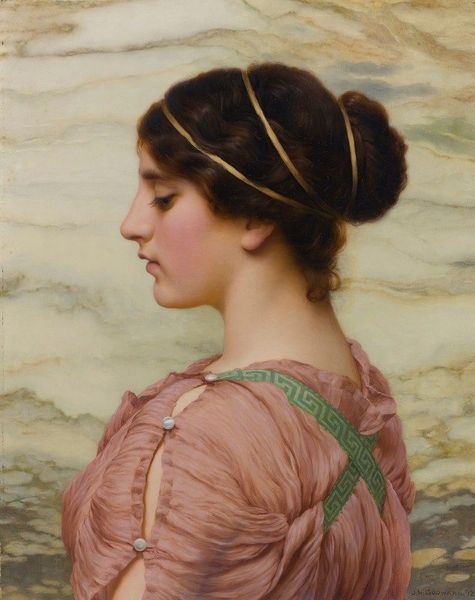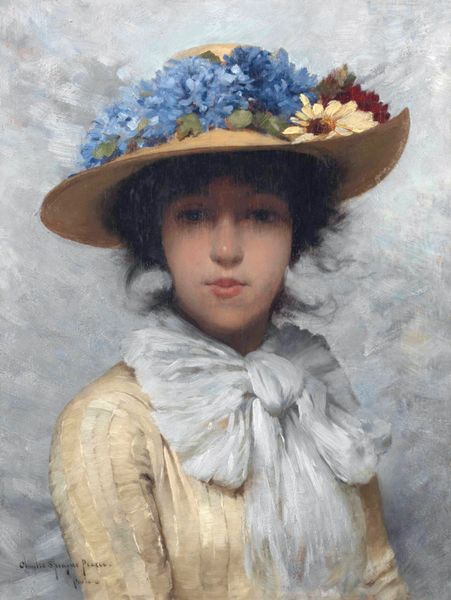
Copyright: Public domain
Curator: Let's turn our attention now to Konstantin Makovsky's "Portrait of Lady Vivien," painted in 1900. What strikes you first about it? Editor: Honestly, it’s that whisper of sadness around her eyes. A lovely melancholy, like a pressed flower in an old book. It makes you wonder about her story, what world she inhabits. And the round shape almost turns the portrait into a pendant or locket, evoking intimacy. Curator: Absolutely, that melancholic air resonates within the socio-political constraints placed upon women of that era, particularly regarding marriage and societal expectations. Do you find any indication about her status in the portrait? Editor: Hmm, she seems wealthy enough to have had this painted of her, I imagine she inhabits this sphere of societal expectation you’re mentioning, even though I would hesitate to interpret that too rigidly! But more generally: The painter has been loose and evocative with the brushwork, softening any potential commentary or judgement that might attach itself to our Lady Vivien here. It creates a romanticized, gentle feel. Curator: Precisely, the romantic style further obscures any critical commentary from being made plain, though that style itself could be examined critically as an escapist tactic to avoid harsher realities. The soft focus and the subject's introspection almost invite us into her private world, even if that world is framed by restrictive societal forces. Makovsky doesn't just present a likeness; he hints at an inner life, complicated by circumstance. Editor: I can see what you're suggesting but really, it makes me consider how easy it is for artists to capture these fleeting moments of universal human feeling… the melancholic look in someone’s eye, that second where all artifice drops away, regardless of social status or societal norms. Lady Vivien is transported, maybe in that instance. It's like peeking through a keyhole. Curator: I agree that those emotional subtleties speak across temporal divides, yet contextualizing "moments" like this within historical power dynamics remains crucial for any deep readings. Editor: Okay, yes, perhaps! I am happy though that whatever social factors were involved in this painting they created a rather lovely artwork. A lovely piece of wistful beauty that speaks for itself, regardless!
Comments
No comments
Be the first to comment and join the conversation on the ultimate creative platform.
